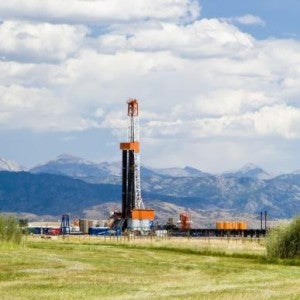 One of the most difficult and urgent challenges facing Western leaders today is how best to regulate the oil and gas development that is quickly spreading to new areas and encroaching on towns and homes.
One of the most difficult and urgent challenges facing Western leaders today is how best to regulate the oil and gas development that is quickly spreading to new areas and encroaching on towns and homes.
Last weekend, The Casper Star-Tribune covered this very topic as oil and gas drilling, once mostly confined to less populated parts of the state, begins to expand into areas near Cheyenne and close by northeastern towns like Douglas that have not experienced this new neighbor before.
This same friction is fueling a rancorous political debate in Colorado, pitting industry against citizens who want their local governments to have more control over oil and gas development. But as the Star-Tribune’s Ben Storrow points out in his column, this isn’t the Wyoming way.
That is because the state and its leaders have a history of being ahead of the curve, of tackling problems before they develop into full scale crises. Wyoming was the first state to require the disclosure of chemicals used in hydraulic fracturing and among the first to require reduced emission (or “green”) completions on oil and gas wells.
Wyoming has the same opportunity today as it considers air quality protections to better limit harmful air pollution from oil and gas development. In June the state’s Department of Environmental Quality proposed a set of updated air quality rules to reduce pollution in the Upper Green River Basin around Pinedale. Getting these rules right will help solve an important public health issue in this area where citizens struggle with ozone pollution from oil and gas operations. Ozone pollution, commonly referred to as smog, can exacerbate asthma and cause other health problems, especially in children and the elderly.
Properly designed, protective rules will also set an important bar across other regions of the state and the nation as other jurisdictions consider the right way to protect residents from oil and gas pollution.
Unfortunately, there are significant flaws in the state’s current proposal that must be fixed. The state must ensure strong, regular leak inspections apply to the vast majority of sources in the basin, that large sources of pollution like compressor stations are covered, and that once pollution controls are installed, they are required to stay in place permanently to effectively clean the air.
EDF will continue to push for strong and workable regulations as the state holds a public hearing on Thursday, as the state’s Air Quality Advisory Board considers the proposal on August 4, and as it goes before the state’s Environmental Quality Council for final action in October.
If they seize it, this is a golden opportunity for Wyoming’s leaders like Governor Matt Mead to show how proactive efforts defuse thorny problems, as well as how energy development, public health and clean air can all coexist and thrive.









